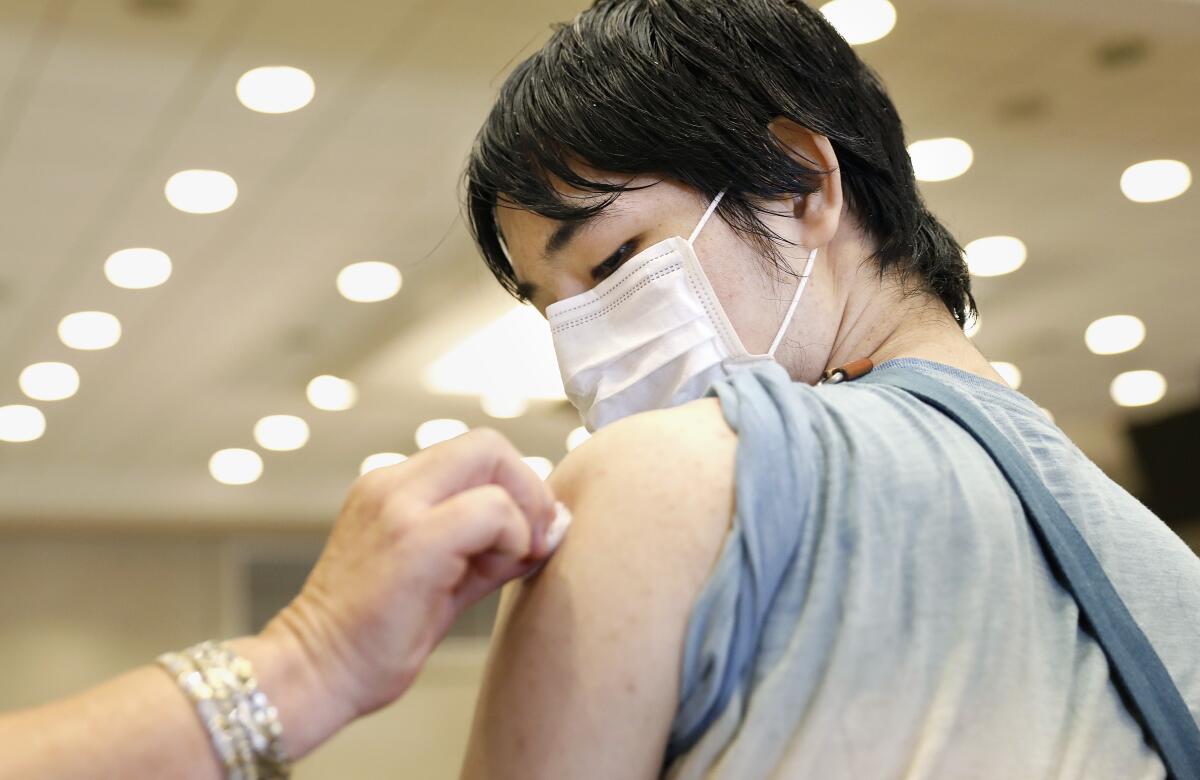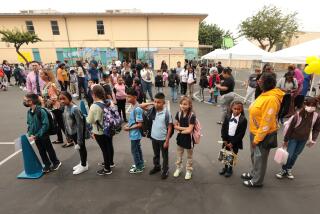Coronavirus spread worsens across L.A. County as Delta variant brings rising alarm

Coronavirus transmission is up across the board in Los Angeles County, a troubling trend officials say illustrates the new normal of the still-potent pandemic — one in which the virus continues to spread easily among residents who have yet to be inoculated.
“Right now, people have the lowest levels of protection from this virus in the communities where transmission is the highest. But among all of our communities, transmission is going up,” county Public Health Director Barbara Ferrer told reporters Thursday.
Over the last week, the county has reported an average of 521 new coronavirus cases a day, a number that, though still significantly smaller than what was seen during the pandemic’s previous waves, nevertheless represents a tripling of the figure from two weeks ago, according to data compiled by The Times.
The county’s positivity rate — the proportion of conducted tests that confirm coronavirus infection — has also shot up, from 1.2% last week to 2.5% as of Thursday.
As has been demonstrated throughout the pandemic, upticks in infections represent just the first link of a potentially devastating daisy chain. A portion of those infected will eventually fall sick enough that they have to go the hospital. Some of them will ultimately die.
And L.A. County is once again tracking an increase in COVID-19 hospitalizations. On Wednesday, 320 coronavirus-positive patients were hospitalized countywide — up 51% from June 12, when 212 were in hospitals, state data show.
Deaths, however, remain low at this point, at about five per day. But, Ferrer noted, “as hospitalizations continue to increase, we anticipate that deaths might also.”
Other counties are also seeing increases in COVID-19 hospitalizations. San Diego County has seen its number of hospitalizations rise from 56 on June 23 to 96 on Wednesday; Orange County, from 40 on June 26 to 79 on Wednesday; Riverside County, from 27 on June 12 to 68 on Wednesday; San Bernardino County, from 41 on June 10 to 105 on Wednesday; and Ventura County, from nine on June 14 to 22 on Wednesday.
“The rate of this increase is concerning,” Dr. Nicholas Moss, the health officer of Alameda County, Northern California’s second-most populous county, said in a statement. Hospitalizations there rose from 20 on June 8 to 71 on Wednesday. The growth in cases is occurring in areas where vaccination rates are lowest, including in neighborhoods that have already suffered the most during the pandemic.
In L.A. County, hospitalization rates are highest in racial and ethnic groups with the lowest vaccination rates.
Though overall coronavirus metrics still remain low, particularly when compared with the devastating surge that struck the region over the fall and winter, L.A. County’s Ferrer said the rapid increases in case and positivity rates indicate that the virus is spreading more widely.
That’s probably the product of a few factors.
The county, like the rest of the state, fully reopened its economy on June 15 — presenting many new opportunities for residents to mix at businesses and venues without most capacity restrictions and masking or physical distancing requirements. Many officials and experts predicted this would trigger some increased transmission, particularly among the unvaccinated.
And while roughly 59% of Angelenos are at least partly vaccinated to this point, millions more have yet to roll up their sleeves.
“We’re a large county, and so the numbers are staggering in terms of people who are at risk of being able to get infected,” Ferrer said.
Hanging over all this is continued circulation of the highly transmissible Delta variant, which has health officials throughout the world sounding the alarm.
Delta is now California’s most identified variant, accounting for 42.9% of cases analyzed in June, according to new figures the state Department of Public Health released Thursday.
The U.S. Centers for Disease Control and Prevention also estimates that the Delta variant, which is believed to be twice as transmissible as the conventional coronavirus strains, now comprises 51.7% of cases nationally.
Despite the dangers posed by Delta, officials stress that the available vaccines hold up well — affording high levels of protection both against infection and the more serious health effects of COVID-19.
“We are seeing that communities and counties that have high vaccine coverage and low case rates are getting back to normal,” CDC Director Dr. Rochelle Walensky said during a briefing Thursday. “Turning the corner on this pandemic, getting back to normal and stopping the Delta variant requires all of us to do our part and to get vaccinated.”
Ferrer said she’s confident that the county won’t regress to the point seen last fall, when hospitals were deluged with COVID-19 patients and daily death tolls were in the hundreds.
But the pandemic’s path is largely tied now to the success of the vaccine rollout. The best-case scenario, Ferrer said, is that L.A. County makes steady progress in inoculating more residents and is able to achieve herd immunity by early fall.
The other side of that coin, though, is “we see a drop-off in people getting vaccinated and we continue to see a proliferation of the Delta variant, which means that, for unvaccinated people, the risk just keeps going up as there’s more community transmission.”
“And that would mean, unfortunately, we would have increased illness amongst many communities that have already been hit hard,” she said. “And at some point this translates as well to some increases in deaths.”
More to Read
Sign up for Essential California
The most important California stories and recommendations in your inbox every morning.
You may occasionally receive promotional content from the Los Angeles Times.












